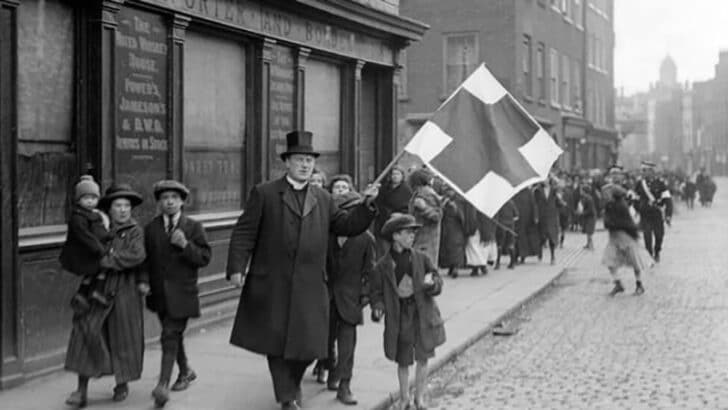Dublin: The Irish Revolution 1912-23
by Brian Hughes (Four Courts Press, €24.95)
This book is the latest in a series where historians were invited to update “a seminal period” in Irish history on a local basis. So far 15 counties have been covered availing of the new archival material. This latest one on Dublin by history lecturer, Brian Hughes, of Mary Immaculate College, Limerick, is obviously the most challenging.
Much of his material is already familiar from the large output in recent years of historical work on the “Irish Revolution” where Dublin was the focal point of the final struggle. The challenge was to portray how the tumultuous national events were impacting on the capital and the surrounding countryside and the author has done extensive research into material and archives not available to previous historians or seen as too localised.
Thus at the time of the royal visit of 1911, Dublin, he notes, had 1800 non-British Europeans, 14 Chinese, 12 Egyptians, 36 South Americans and a Samoan, according to the latest census. Crime was very low, the Dublin trams carried 58 million passengers a year, the tenements were the most densely populated of Britain and Ireland with the record in Henrietta St.
The Great War
With the outbreak of the Great War in 1914, social life was to change drastically as young men from the Protestant and Catholic middle classes and from the slums joined the battalions of the Royal Dublin Fusiliers and a new category of Dubliner appeared, the “separation women” who depended on their husbands’ allowances. Refugees from Belgium were mostly welcomed but the Killarney and Ballybrack refugee committees made clear they would “not take Jews or agricultural labourers.”
Dublin mourned as the deaths mounted. The Fusiliers took heavy losses at Gallipoli, the poet Katherine Tynan who had two sons enlisted wrote of a sense of bitterness that “lives had been thrown away and their heroism unrecognised…Dublin was full of mourning.”
The 1916 Rising changed Dublin utterly. Class divisions showed themselves in the disgust of the middle classes, Catholic and Protestant, for the looting by “the slum people” as John Dillon of the Irish Parliamentary Party termed them as he observed them from his house in North Great Georges St. He feared that they would break into the public houses.
But the Spring Show went ahead in Ballsbridge the day after the Rising. Just as the Liffey Swim, the Phoenix Park races and the Dublin Horse Show went ahead soon after the outbreak of the Civil War with the shelling of the Four Courts six years later.
When 10,000 Catholic refugees fled to Dublin from the pogroms in Belfast in early 1922 the Provisional Government took little notice and it was the anti-Treaty Republicans who provided shelter”
While the IRA in 1920-21were ambushing the Auxiliaries in the centre of the city and civilians were killed and injured by shrapnel in Grafton St and Camden St (nicknamed “the Dardanelles”) life went on with cinemas and ballrooms thriving. The IRA headquarters clamped down on ambushes in north Co. Dublin for a period lest they provoke martial law. Howth and Sutton were deemed more suitable as “a place of quiet retreat for IRA personnel” , a senior officer told the Bureau of Military History years later.
When 10,000 Catholic refugees fled to Dublin from the pogroms in Belfast in early 1922 the Provisional Government took little notice and it was the anti-Treaty Republicans who provided shelter mainly in Protestant buildings such as the Masonic headquarters in Molesworth St and the Kildare St Club.
The author has an eye for such incongruous situations while filling out the picture of the socio-political and military narrative of those turbulent years in the history of Dublin. His attention to the quiet heroism of the women in Cumann na mBan is welcome.



